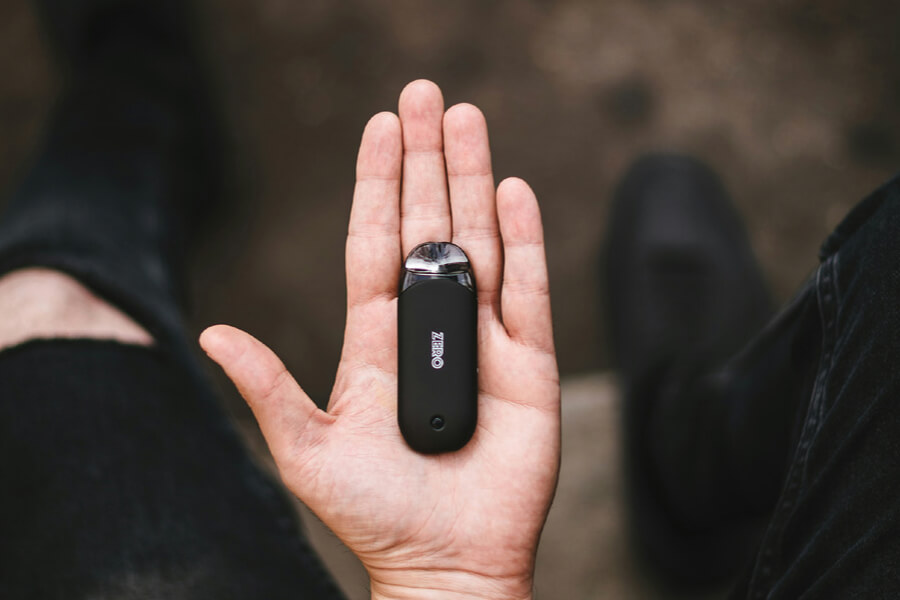
Prime Magazine March/April Issue
Despite the decreasing prevalence of cigarette smoking in Singapore over the years, the number of illicit vaping cases has actually been on the rise. In 2022, 4,916 people were caught for the offence. And in December 2023 alone, an alarming 1,656 vaping-related cases were reported.
WHAT IS A VAPE?
A vape is a battery-powered pen/device that heats vaping liquid in its pod (or capsule), turning it into an aerosol (vapour) which the user then inhales. It is often touted as a healthier alternative to tobacco smoking, and is marketed to be less harmful or even harmless. However, there is a lot of misinformation about vaping being peddled online, and there is a pressing need to address these misconceptions and provide tips on how to live a healthy vape-free life! Let us now debunk some of the most common myths about vaping.
MYTH 1: ZERO-NICOTINE VAPES ARE HARMLESS
Fact: Laboratory studies have found that exposure to nicotine-free vapes can cause an inflammatory reaction in certain white blood cells. Over time, such chronic inflammation may damage the body tissues and organs. Other laboratory studies also show that nicotine-free vaporised fluids may lead to cellular death.
Even without nicotine, there are other toxic compounds found in aerosolised vapour. They include:
-
Benzene: A component of gasoline which is linked to diseases like leukaemia (a type of blood cancer), bone marrow failure and increased risk of cancer.
-
Diacetyl: A chemical linked to severe lung disease.
-
Formaldehyde, Acetaldehyde, Nitrosamine: These known carcinogens can cause cancer in the lungs and multiple organs.
-
Nickel, Tin, Lead and Cadmium: These heavy metals are carcinogens, and can cause inflammation in the oral cavity, oral cancer as well as neurodegeneration.
The contents of vapes are not regulated. They are not benchmarked to an industry standard like cigarettes. As such, contrary to popular belief, most vapes do contain nicotine, despite being labelled as zero-nicotine or nicotine-free.
MYTH 2: ONE VAPING SESSION SHOULD NOT AFFECT MY BODY
Fact: In a study to investigate the immediate effects of vaping, scientists conducted imaging scans on 31 healthy, non-smoking adults both before and after using a nicotine-free vape. The results show that a single vaping session led to decreased blood flow and impaired endothelial function in the large femoral artery, which is responsible for supplying blood to the thigh and leg. The endothelium, which is the inner lining of the blood vessels, plays a vital role in ensuring proper blood circulation. When the endothelium is damaged, arteries may thicken. This can lead to restricted blood flow to the heart and brain, and increase the risk of heart attack or stroke.

MYTH 3: VAPES CAN HELP ME TO QUIT SMOKING CIGARETTES
Fact: The World Health Organisation (WHO) does not recognise vapes as a legitimate aid to help one quit smoking. There is no conclusive evidence to prove their safety and efficacy in helping one to quit smoking. Vape users may even dually use cigarettes with vapes, which has been shown to result in worsened health outcomes.
The duration of vaping is another concern. Unlike cigarettes, vapes do not burn out. As such, users can keep puffing away (a term called “grazing”) and in doing so, consume even more nicotine than they would with a cigarette.
MYTH 4: VAPING IS HEALTHIER THAN TRADITIONAL CIGARETTES AND DOES NOT HARM MY LUNGS
Fact: Some vapes are available in fruity flavours, which can mislead one into thinking they are healthy or harmless. However, vape users may experience upper respiratory issues like cough or sore throat. In more serious cases, they may even suffer from a severe lung disease where the lungs experience damage resembling adult respiratory distress syndrome. In critical cases, the lungs become significantly impaired and leak fluid. Such patients require an invasive mechanical ventilator to assist with their breathing. The more severe phenomenon has been termed e-cigarette or vaping product use-associated lung injury (EVALI) or vaping-induced lung injury.

TIPS FOR A VAPE-FREE LIFE
If you are thinking about quitting vaping, these are some strategies you can adopt:
-
Seek Professional Help
Anyone keen to wean off vaping can seek professional advice from a qualified smoking cessation consultant for professional help via the iQuit hotline, retail pharmacies or public healthcare institutions. -
Practice the 4Ds
- Distract yourself by doing something to occupy your mind until the craving passes.
- Delay acting on the urge to vape.
- Deep breathing, when done effectively, can help to reduce stress and alleviate the need to vape for stress relief.
- Drink water slowly so that you do not vape.
-
Focus on Health and Wellness
Shift your focus towards overall health and wellness. Engage in regular exercise, adopt a balanced diet, and prioritise self-care. A healthy lifestyle can help to mitigate the challenges of quitting and improve your overall well-being.
-
Build a Support Network
Surround yourself with a supportive network to lean on during challenging moments. It can be tough to quit, but with support, the journey will be better. -
Identify Triggers and Plan Alternatives
Recognise situations that trigger the urge to vape and develop alternative activities to replace these habits. Whether it is taking a brisk walk, sucking on sugar-free candy, or playing games, having alternatives at your disposal is crucial. -
Celebrate Milestones
Acknowledge and celebrate your achievements, whether it is a day, a week or a month without vaping. Rewarding yourself for reaching milestones reinforces your commitment and boosts morale. - Avoid Dual Use of Smoking and Vaping Many smokers use vapes to reduce the number of cigarette sticks they smoke. However, prospective studies have shown that dual use of smoking and vaping has led to poorer health outcomes compared to cigarette smoking alone, and is associated with higher cardiovascular risks.
A vape is a battery-powered pen/device that heats vaping liquid in its pod (or capsule), turning it into an aerosol (vapour) which the user then inhales. It is often touted as a healthier alternative to tobacco smoking, and is marketed to be less harmful or even harmless.
CONCLUSION
Quitting vaping is an important decision. The short-term harms associated with vapes are well-documented, even if the long-term effects are yet to be known. The journey to a vape-free life is within reach. Armed with effective strategies, breaking free from the grip of vaping is possible. Embrace the challenge, celebrate your successes, and revel in the positive changes that await you on the path to a healthier, more vibrant life.
Mr Shaun Eric Lopez is a Senior Clinical Pharmacist from the Pharmacy Division at Tan Tock Seng Hospital (TTSH). He is the lead for the Outpatient Smoking Cessation Service in TTSH. Mr Lopez has an avid interest in chronic disease management and health promotion. - Tan Tock Seng Hospital